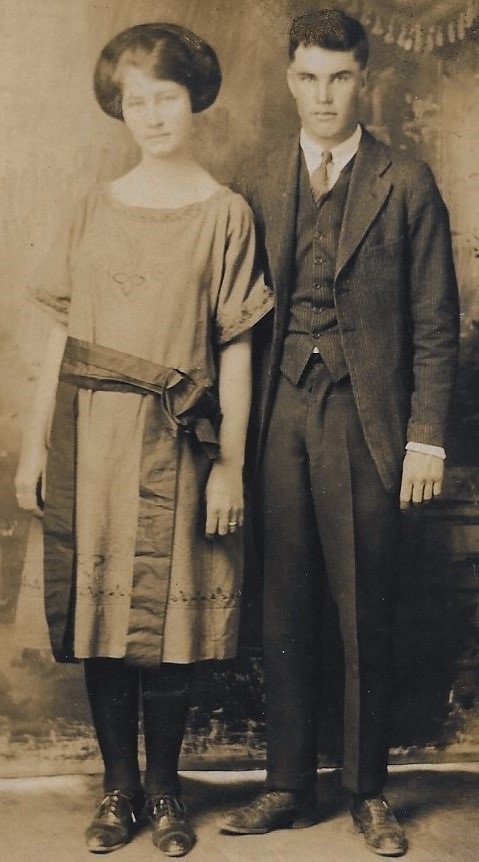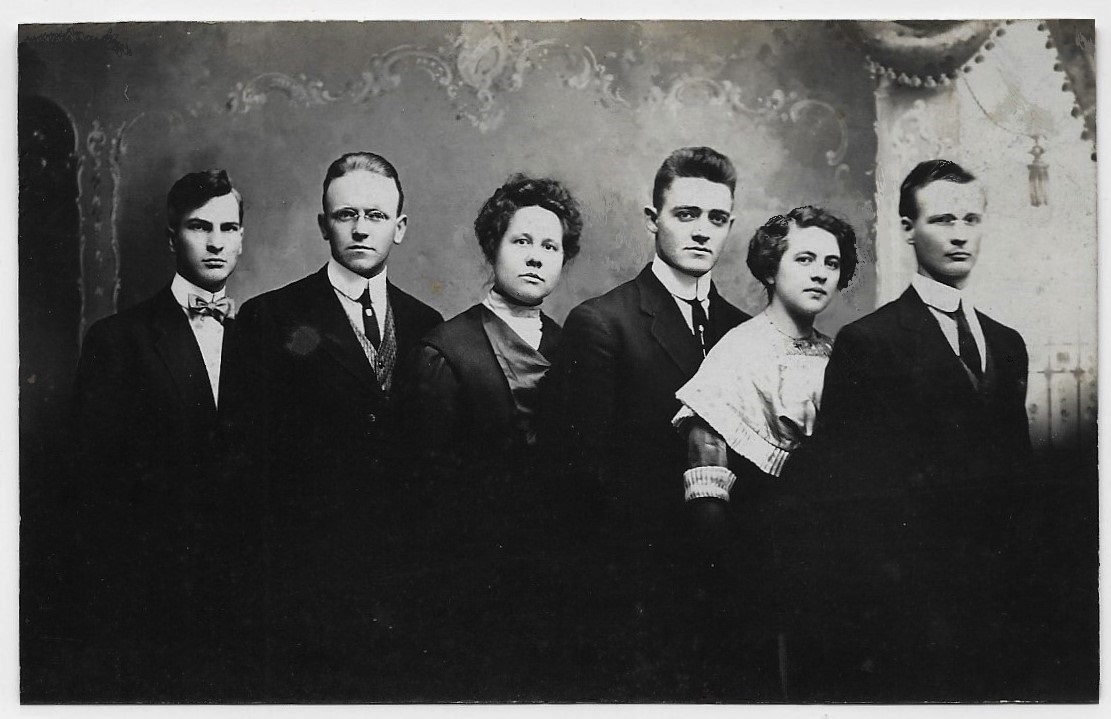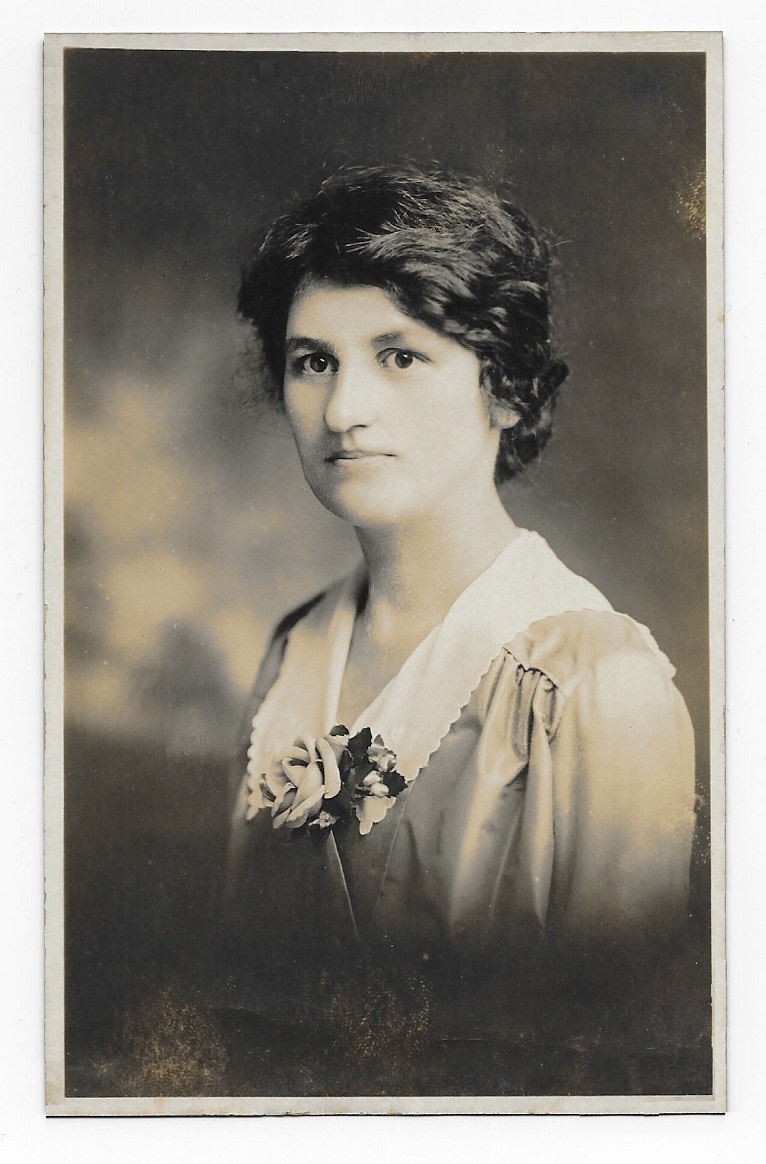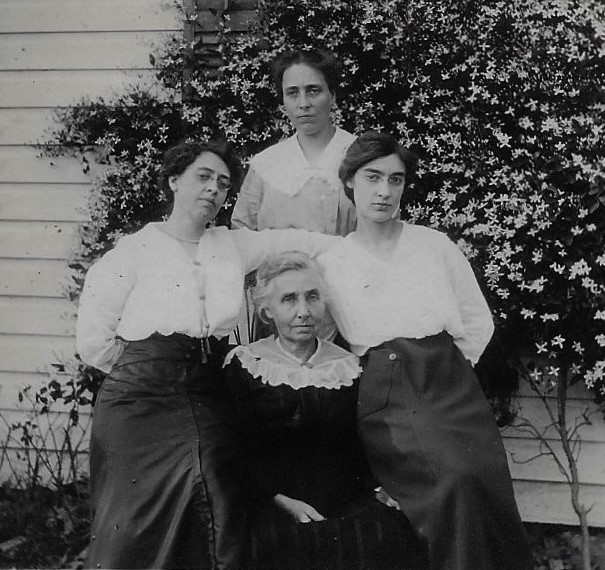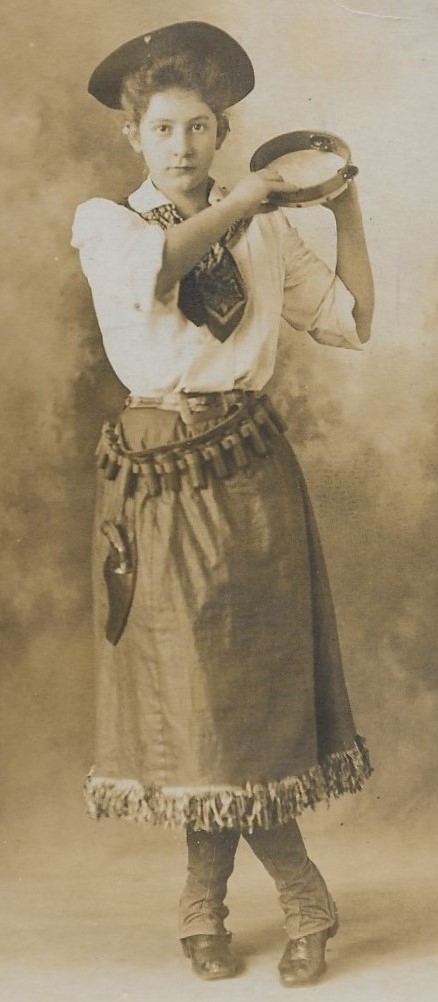
Postcard Photographs
Snap A Photo.
The business of personal photography boomed throughout the last quarter of the 19th century; almost every village and town had at least one photograph studio.
Cities, even small cities, often boasted a dozen studios to satisfy the market for personal photographs.
In many places, local entrepreneurs added photography services to their businesses – especially stores, printers, newspaper offices, and pharmacies.
Many photography studios provided a variety of backdrops or settings for the photograph, permitting the sitter to choose to be presented in a studious pose (with desk, bookcase, or globe), a painted backdrop of a rustic scene (a field, hill, or orchard), or an elaborate parlor (with lamps, grand furniture, or heavy drapes).
In the early 2oth century, the explosion in popularity of the penny postcard led to a craze of postcard photographs.
Unlike the stiff, oversize Carte de Visite style studio portrait that was the norm before 1900, the postcard photograph was lighter, cheaper, and easier to mail.
Many tourist locations, especially the boardwalks of beach resorts, amusement parks, or trolley parks, featured photography studios with comic themes – the sitter’s features appearing with other figures, on an animal, or in a precarious or ridiculous position.
The personal camera, which steadily grew in popularity after the first “Brownie” camera was introduced by Kodak in 1900, fueled continued expansion of the postcard photograph.
Around 1910, one begins to find many postcard photographs that were taken outside of the studio, but developed by a photographers shop.
The same occasions inspired a photograph in the early 20th century as personal landmarks do today – births, christenings, graduations, courtship, engagements, marriages, new jobs, travel, reunions, and celebrations of friendship.
